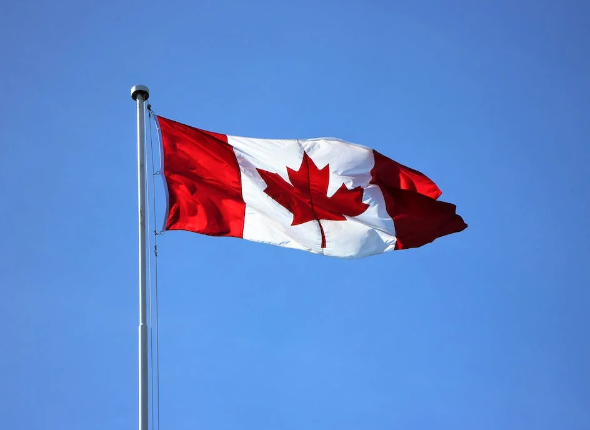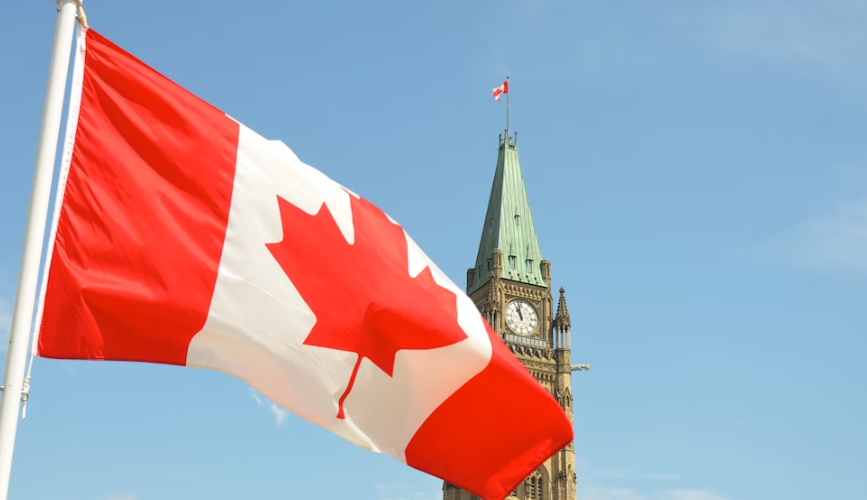
With its welcoming people, developed infrastructure, and excellent policies for immigrants, it’s no wonder that Canada is one of the most sought-after destinations for all those looking to resettle in a new country.
As of February 2022, Canada tabled the policy of inviting immigrants at 1% of the Canadian population. This accounts for approximately 1.3 million permanent residents coming to the country between the years 2022-2024.
These increased levels were in line with Canada’s ongoing economic resurgence that required an increase in the labor force. It’s also aimed at reuniting families with a family sponsorship policy and resettling refugees with valid refugee claims.
For all the people who are interested in starting new lives in Canada, there are many pathways to Canadian permanent residency. Among all these options, Express Entry remains the most popular and competitive pathway for all skilled and educated people.
But what exactly do you need for Express Entry to Canada? Keep reading to learn all about it before you take the leap.
What is Express Entry to Canada?
The Express Entry system is an online system for immigrants interested in applying for permanent residence in Canada. This pathway was established in 2015 as a way of bringing in the skilled workforce into the country to support its economic growth.
Express entry essentially organizes all applications into three federal immigration programs as described below.
1. Canadian Experience Class (CEC)
The CEC program is geared towards applicants who have gathered at least one year of Canadian work experience in the last three years before applying. This can be at a full-time job that’s 30 hours per week or equal time in a part-time job that’s 15 hours per week.
This work experience should have been gained while the applicant was working in Canada as a temporary resident with a work permit.
2. Federal Skilled Worker (FSW)
The FSW program targets individuals who have foreign experience and also meet the minimum eligibility criteria to apply for Express Entry. The minimum eligibility criteria include six factors that every profile is judged on:
- Age (people under the age of 30 are at an advantage here)
- Education level (Higher education results in a higher score)
- Foreign work experience
- Valid job offer from an employer in Canada
- Valid French and/or English language test scores
- Level of adaptability (how easily an applicant can adapt in the new country)
Applicants applying through this stream can check their eligibility by calculating their score on a 100-point grid. Currently, applicants need to score 67 points on this grid to be eligible for FSW.
3. Federal Skilled Trades (FST)
FST targets individuals who have a skilled trade that’s also backed by a valid job offer or a recognized certification. Applicants using this Express Entry stream are required to check their trade under the National Occupational Classification (NOC) to see which group they’re present in. All the applicants present in Major Groups 72, 73, 82, 83, 92, and 93 are eligible to apply, including those in Minor Group 6320 and Unit Group 62200.
It’s also important for applicants to show at least 2 years of work experience in the trade they’re applying for. If the work experience is not relevant to the trade, then the application will be rejected.
What Do You Need to Apply for Express Entry?
No matter which of the three streams you’re eligible for, your first step is to make an Express Entry profile online. Before you make your profile, you’ll be required to complete an eligibility questionnaire to see if you’re qualified to enter the pool of applicants. This questionnaire will include questions about your age, education, work experience, and language ability.
After you’ve filled the questionnaire, the website will tell you your CRS score (more about this in the next section) and which of the three streams you’re eligible for.
Keep reading to learn more about all that you’ll need to know before making a profile for Express Entry to Canada.
CRS Score
All the prospective immigrants in the Express Entry pool are ranked against each other through the Comprehensive Ranking System (CRS). This system assigns a score to every profile so that every applicant is comparable with others. This score is based on the specifics of the applicant’s profile such as:
- Age
- Marital status
- Foreign/Canadian work experience
- Education level
- English and French language test scores
- Job offer from Canadian employer
- Provincial nomination (more about that later)
The IRCC conducts Express Entry draws at regular intervals and a cut-off CRS score is established for every draw. Applicants with a CRS score higher than the cut-off score will be sent an Invitation to Apply (ITA) for permanent residence.
As an applicant, your CRS score is the sole indicator of whether you’ll receive an ITA or not. A high CRS score will put you at a competitive advantage over other applicants and will make it more likely for you to get to Canada. There are some ways you can boost your CRS score to improve your profile. These include:
- Giving information about sibling in Canada
- Becoming proficient at speaking French
- Getting a job offer from Canada
- Going through the Provincial Nominee Program
Documents Required for Express Entry
When making an Express Entry profile, you may not need to submit documents but you will need information from them. Here are all the documents you should keep with you when making your profile:
- Valid passport and travel documents.
- Educational Credential Assessment (ECA) for your degrees, diplomas, and certification. This will act as a Canadian equivalency and the ECA is only valid from one of these designated organizations:
- Results of valid English and/or language tests approved by the IRCC. For English you can choose between CELPIP-General Test and IELTS-General Training. For French, you can choose TEF Canada or TCF Canada.
- Proof of foreign/Canadian work experience.
- Certificate(s) of qualification
Minimum Language Test Results
Your language tests should be valid for at least 12 months from when you add them to the Express Entry profile which means their 2 year validity shouldn’t lapse during this time. In addition to this, you must also meet the minimum language test results required to qualify for your particular Express Entry stream.
English language ability is measured using Canadian Language Benchmarks (CLB) and French language ability is measured using Niveaux de compétence linguistique canadien (NCLC). Here are the minimum overall CLB and NCLC slabs you need to meet for the three Express Entry pathways:
- FSW Program: CLB or NCLC 7 for first language and CLB or NCLC 5 for second language (if applicable).
- CEC Program: CLB or NCLC 7 for NOC Teer 0 and 1 and CLB or NCLC 5 for NOC Teer 2 and 3.
- FST Program: CLB or NCLC 5 in English/French listening and speaking and CLB or NCLC 4 in English/French reading and writing.
Provincial Nomination
Getting a provincial nomination will increase your CRS score by 600 points and essentially guarantee an ITA for you. You can get a provincial nomination by applying for the Provincial Nominee Program of the province or territory that you want to target. Every province has its own requirements for which they will give nomination to certain individuals. These individuals may be:
- Students
- Business persons
- Skilled or semi-skilled persons
Provinces often pick applicants from the Express Entry pool but you can apply for the PNP through the non-Express Entry stream as well. You can do this by applying on the province’s website and they will nominate you if you meet their eligibility criteria.
Applying for Permanent Residence after Receiving ITA
If your profile gets selected in the Express Entry draws, you’ll receive an ITA for permanent residence. You will then have to submit an electronic application for permanent residence (eAPR) within 60 days of receiving the ITA. You’ll be required to submit scanned copies of essential documents including:
- Police verification certificate
- Valid medical exams
- Proof of funds (bank statements)
- Marriage certificate or common-law union form
- Divorce certificate if your marital status is divorced, death certificate if your status is widowed.
- Birth certificate of dependent child (or adoption certificate for adopted dependent child)
After you’ve submitted all your documents, you need to meet all the admissibility requirements in the Immigration and Refugee Protection Act to enter Canada and secure your permanent residence.
It’s also important to ensure that your Express Entry profile is backed by documented proof that you’ll have to submit with your eAPR. If you want to improve your chances of getting an ITA, you should definitely consider hiring a team of immigration lawyers in Canada.
At Nanda & Associate Lawyers, you can find both Canadian lawyers and immigration advisors who have a deep understanding of all the regulatory examinations.
Our team of immigration lawyers in Toronto and Missisauga are adept at helping clients from all over the world with entrepreneur visas, global talent streams, intra-company transfer work permits, labor market impact assessments, spousal open work permits, etc.
Schedule an appointment with us today, and our team will help you with everything from immigration appeal to taking care of family sponsorship for you.











